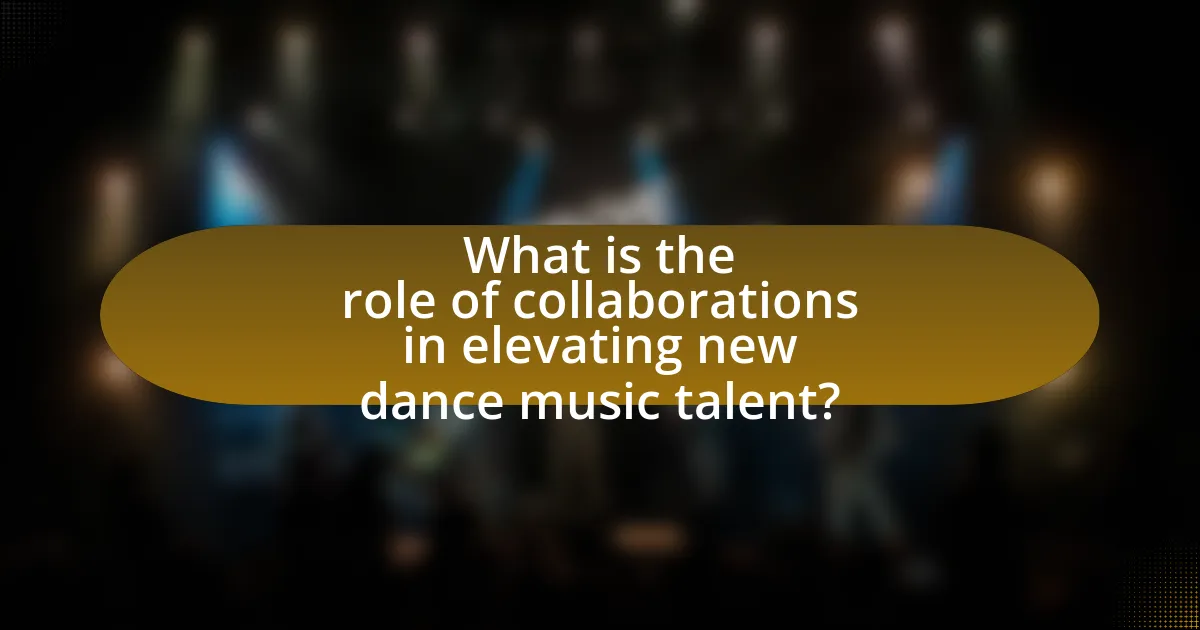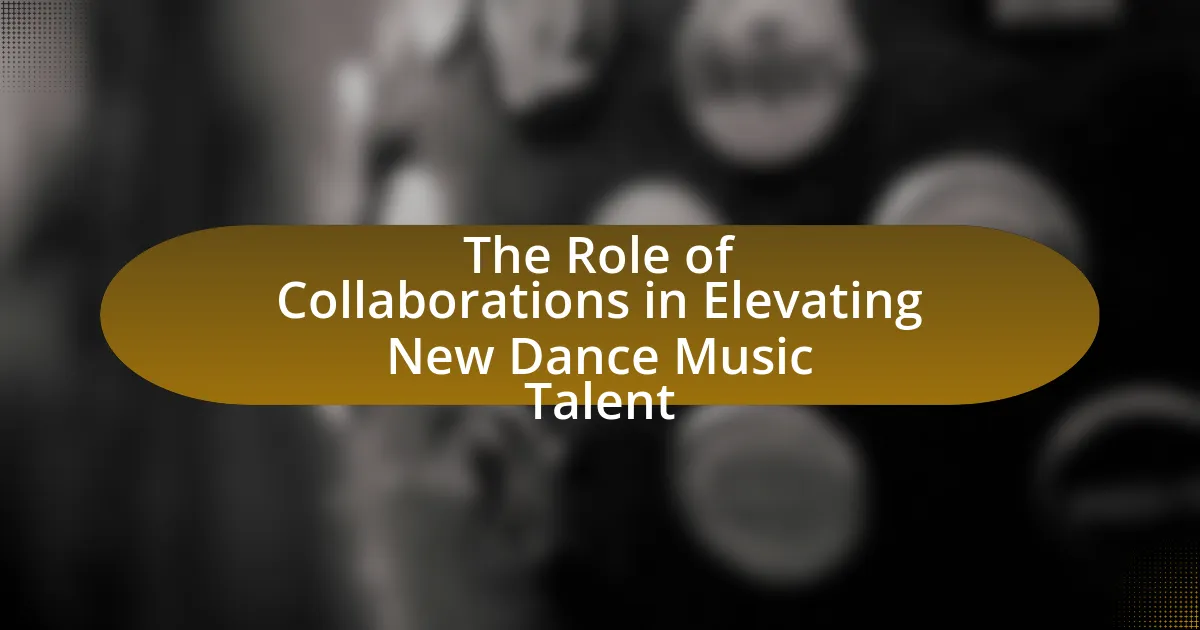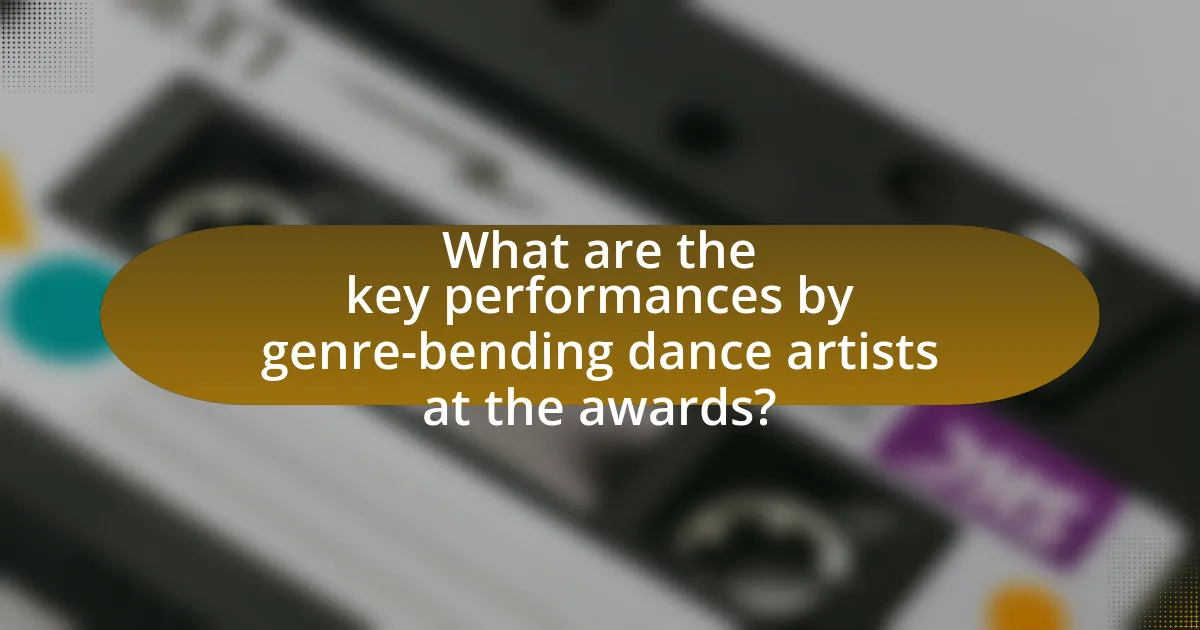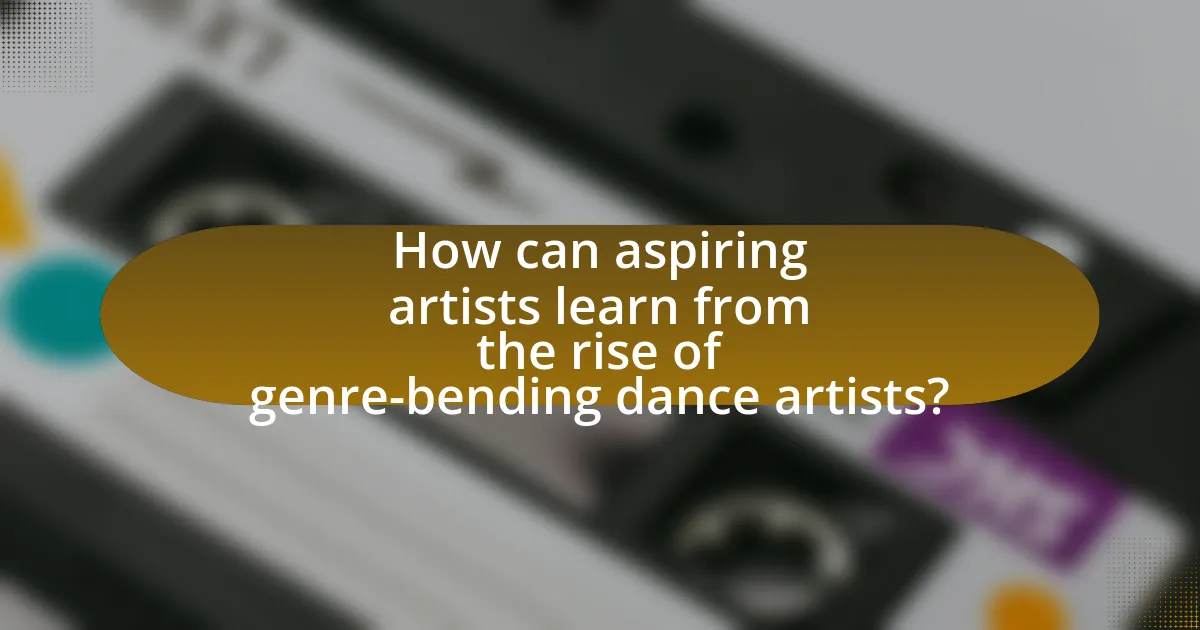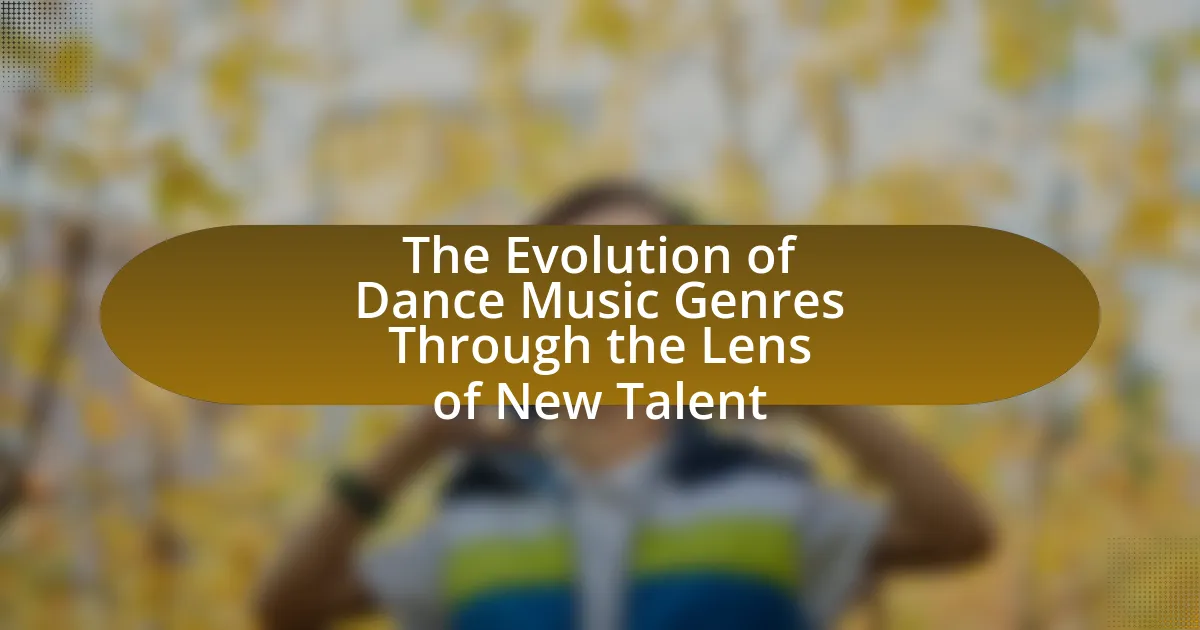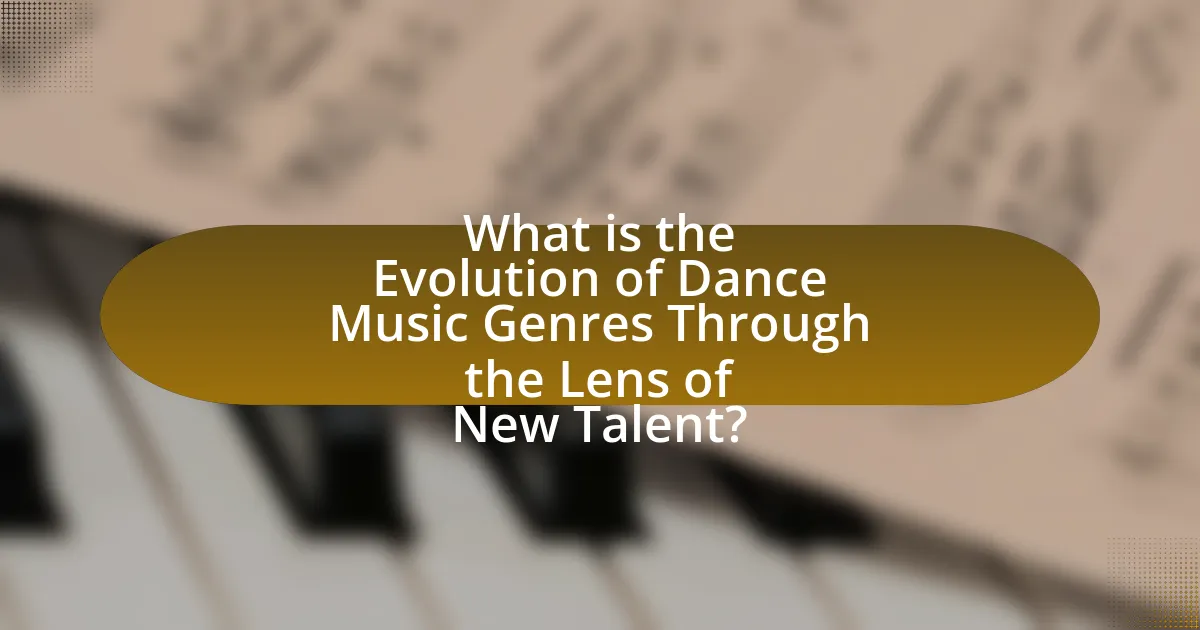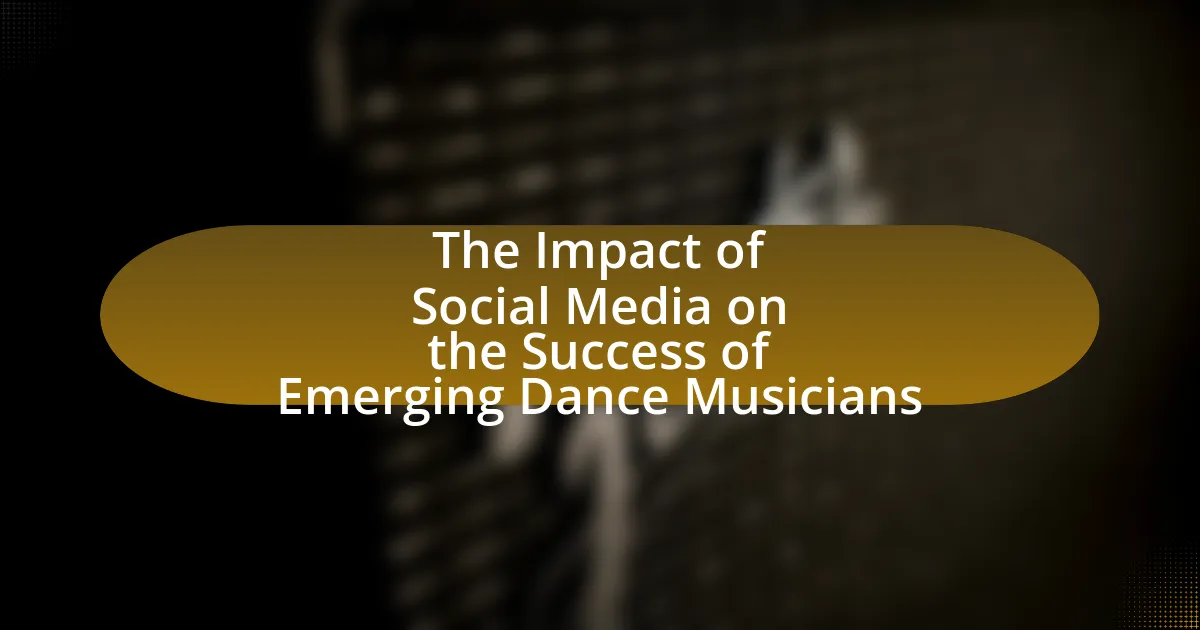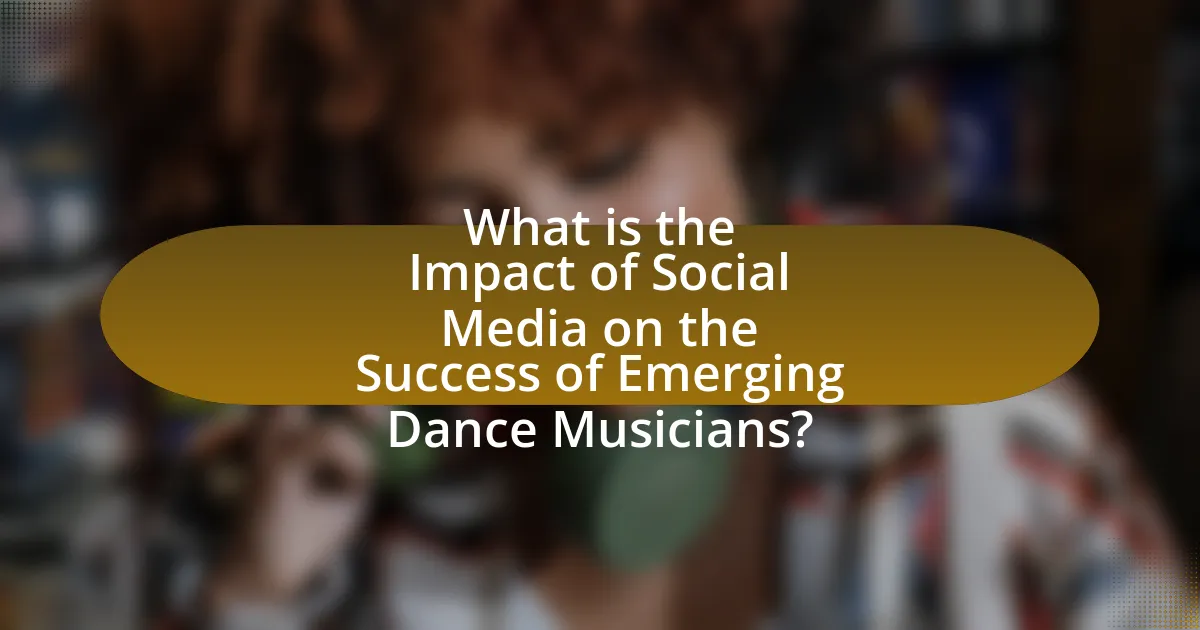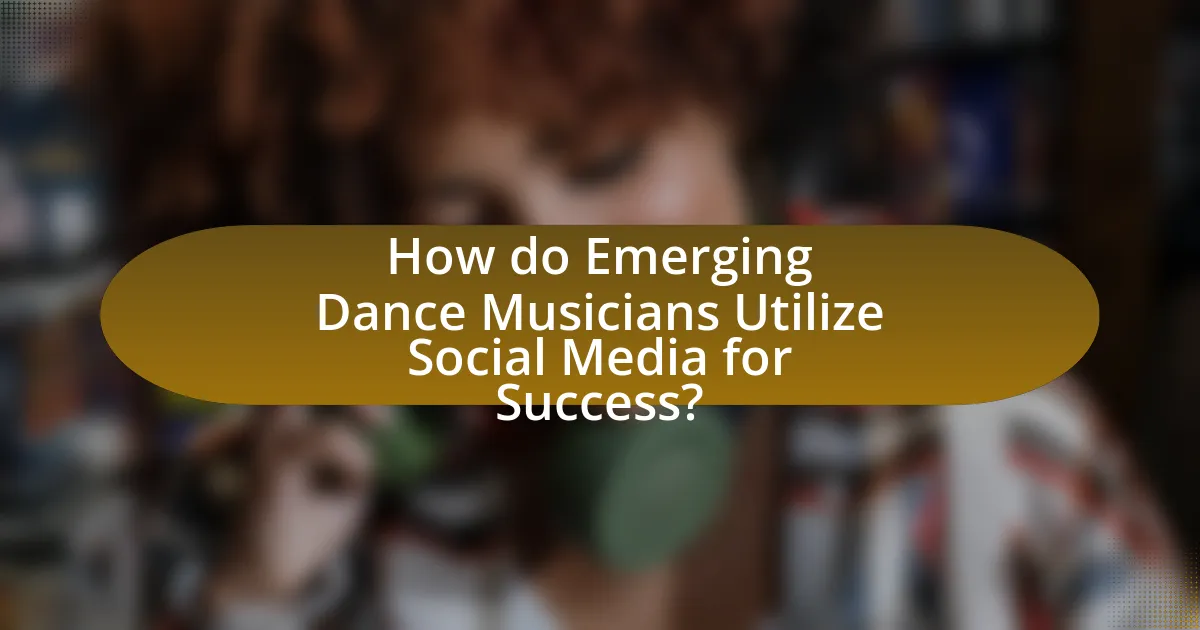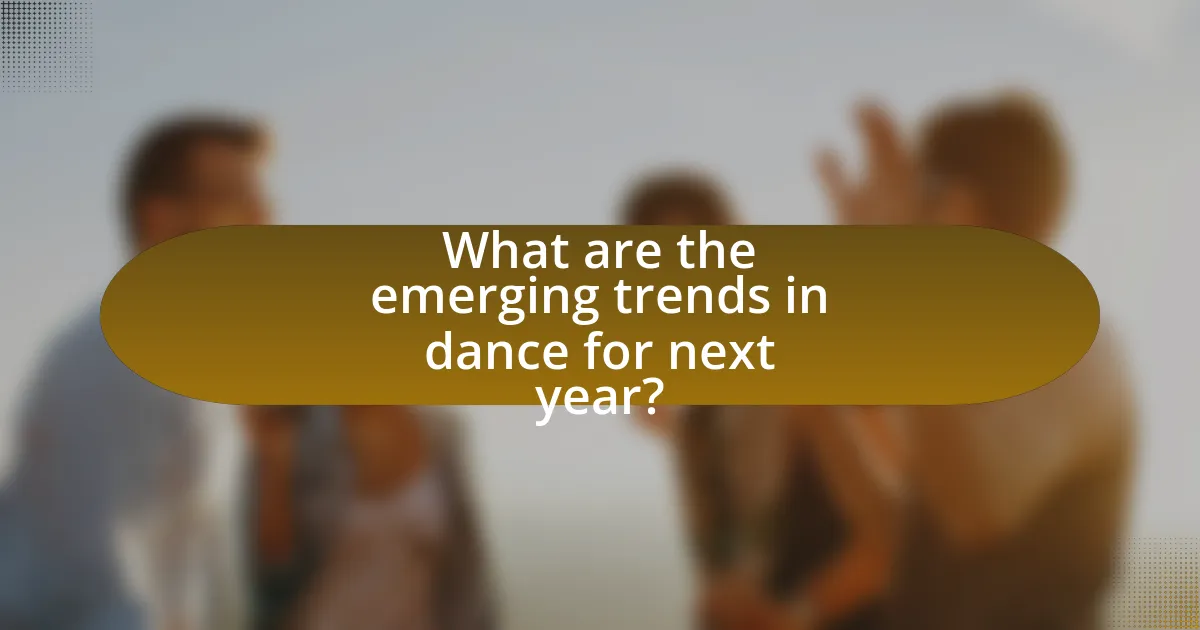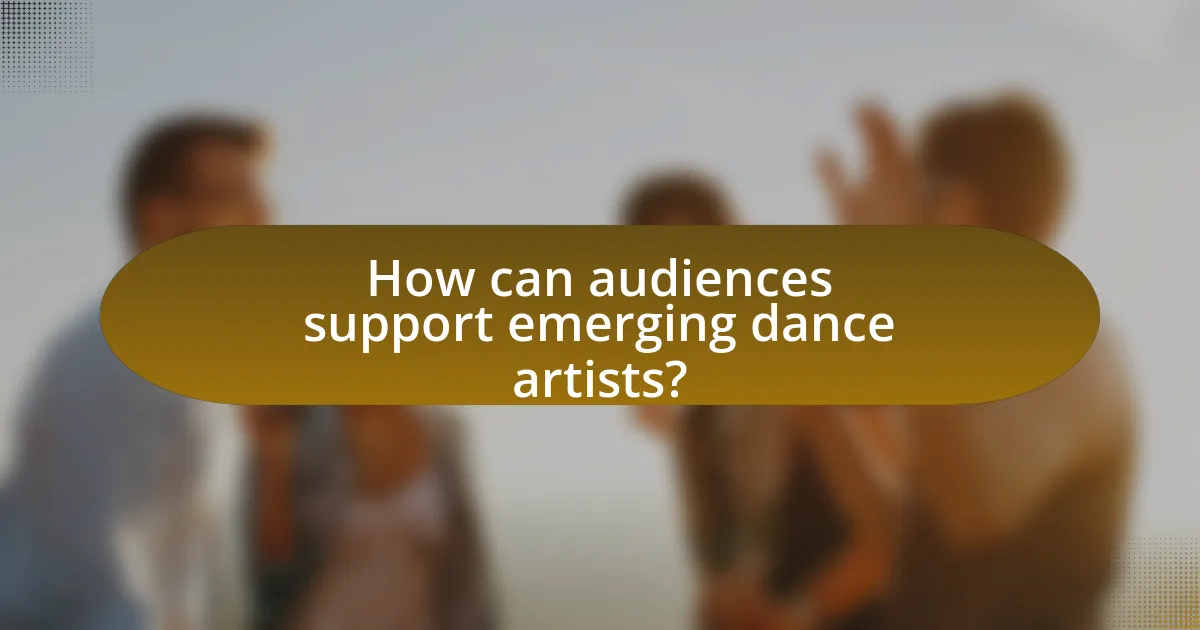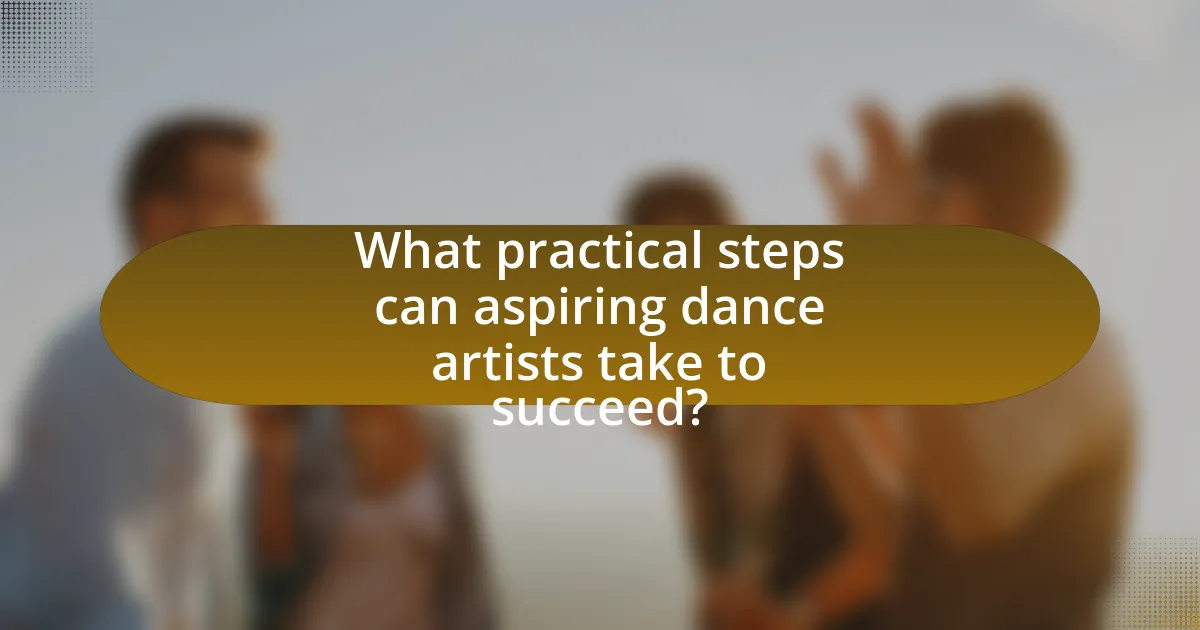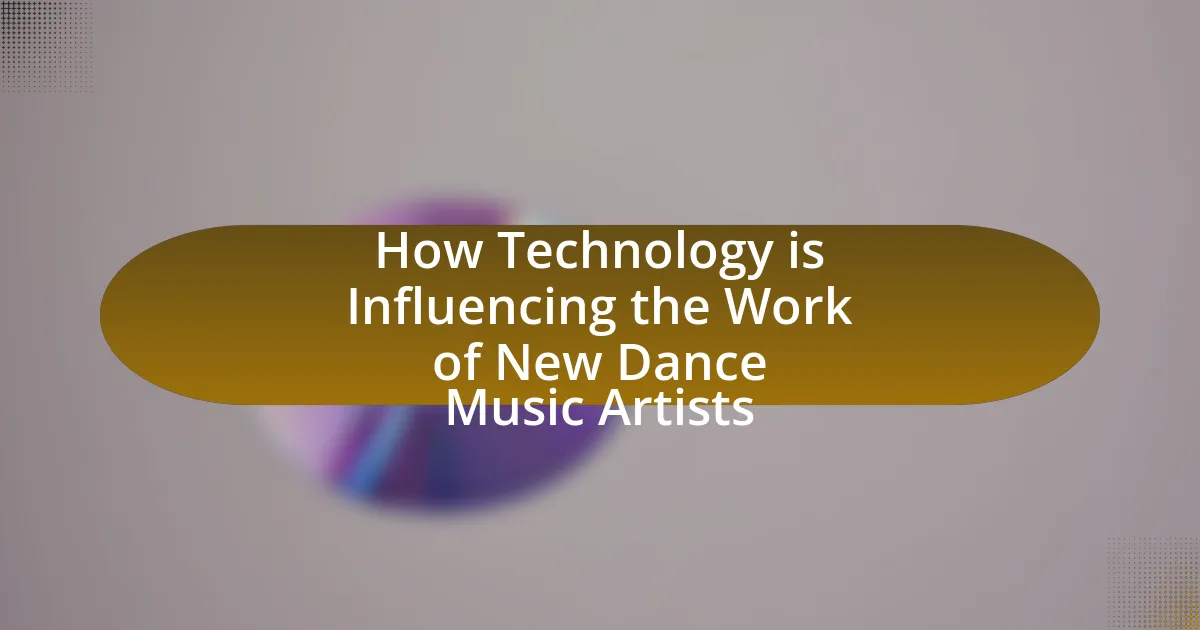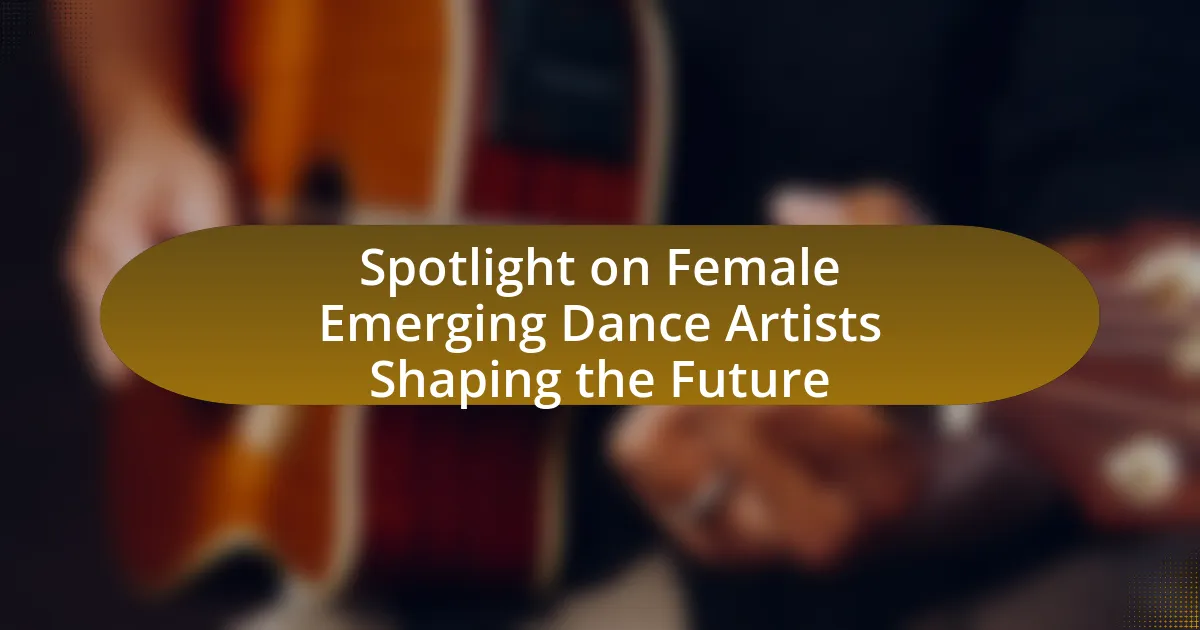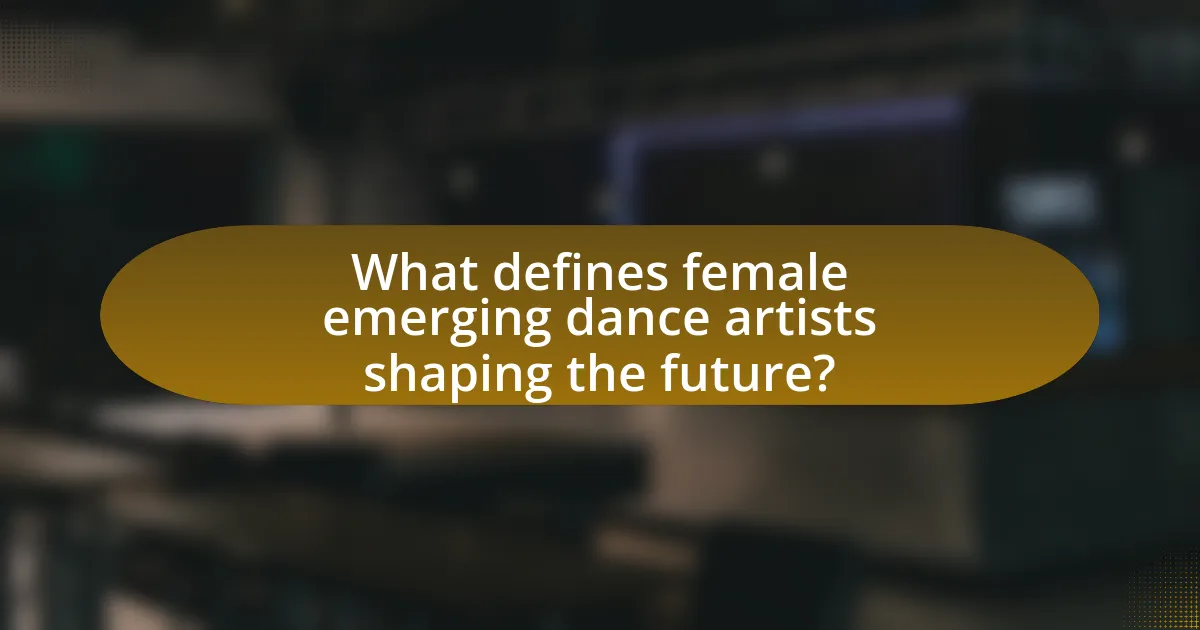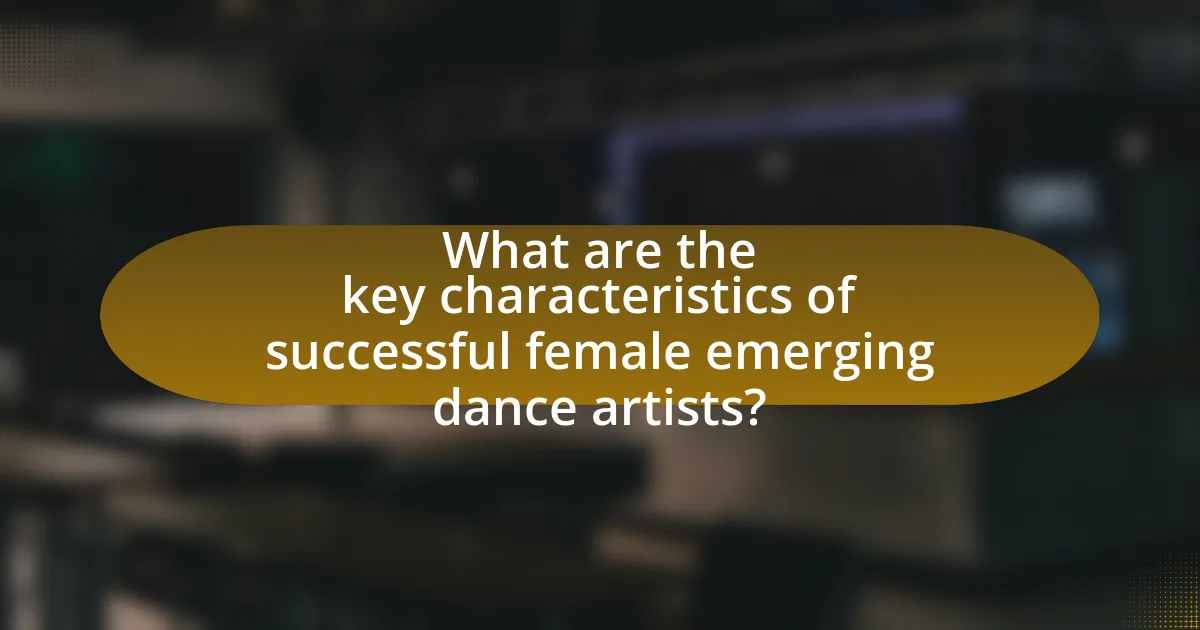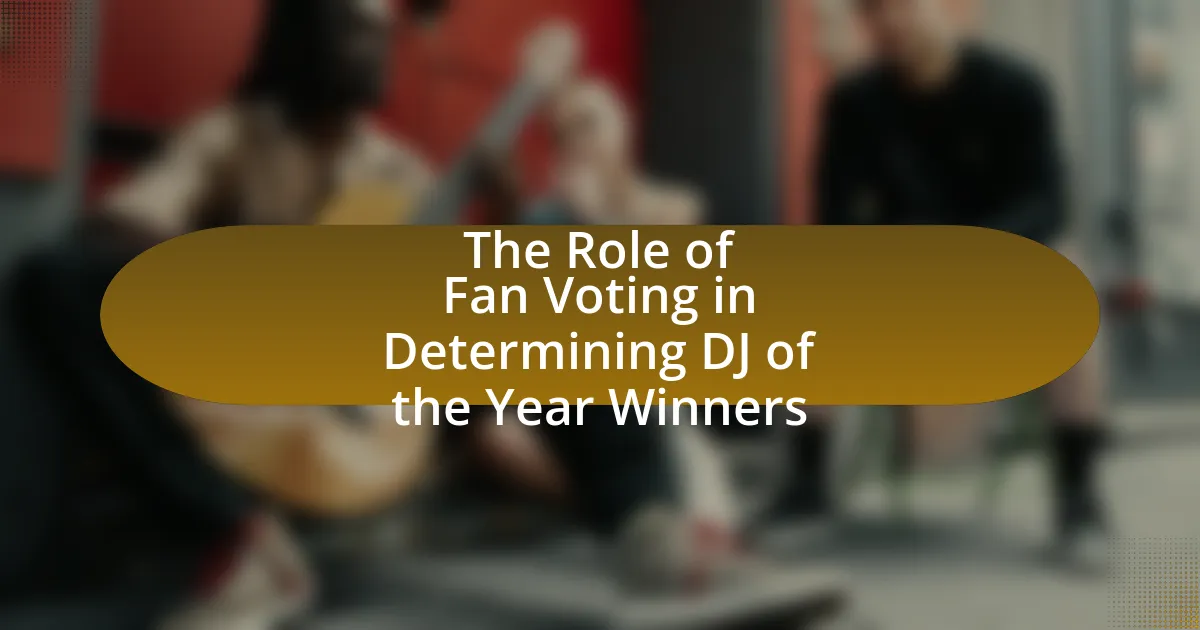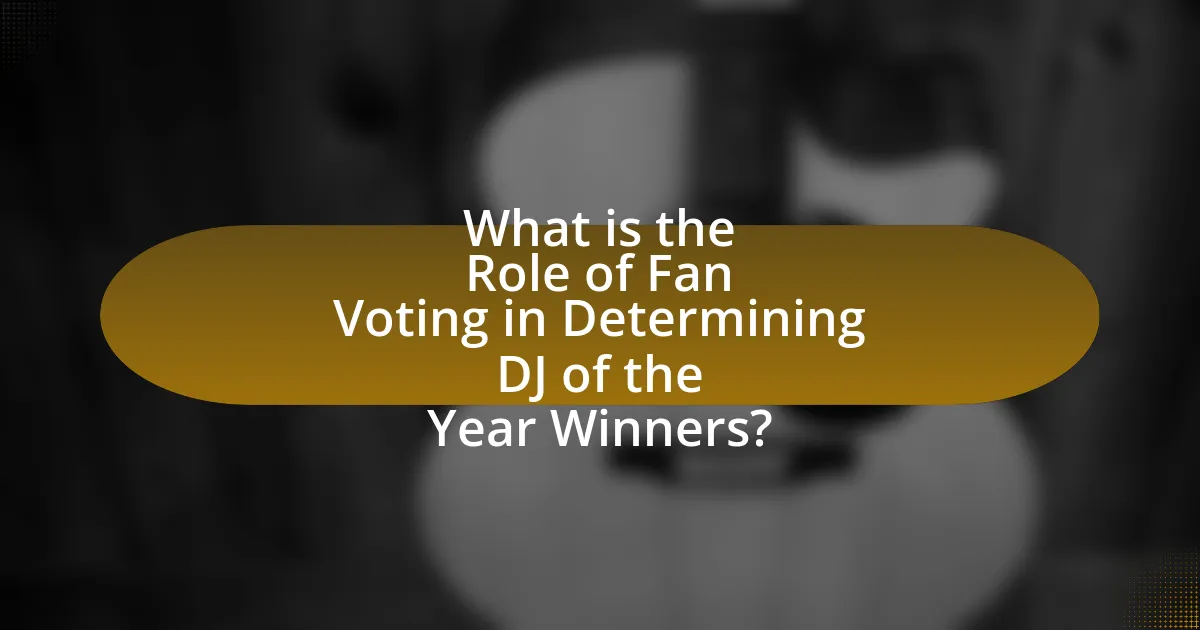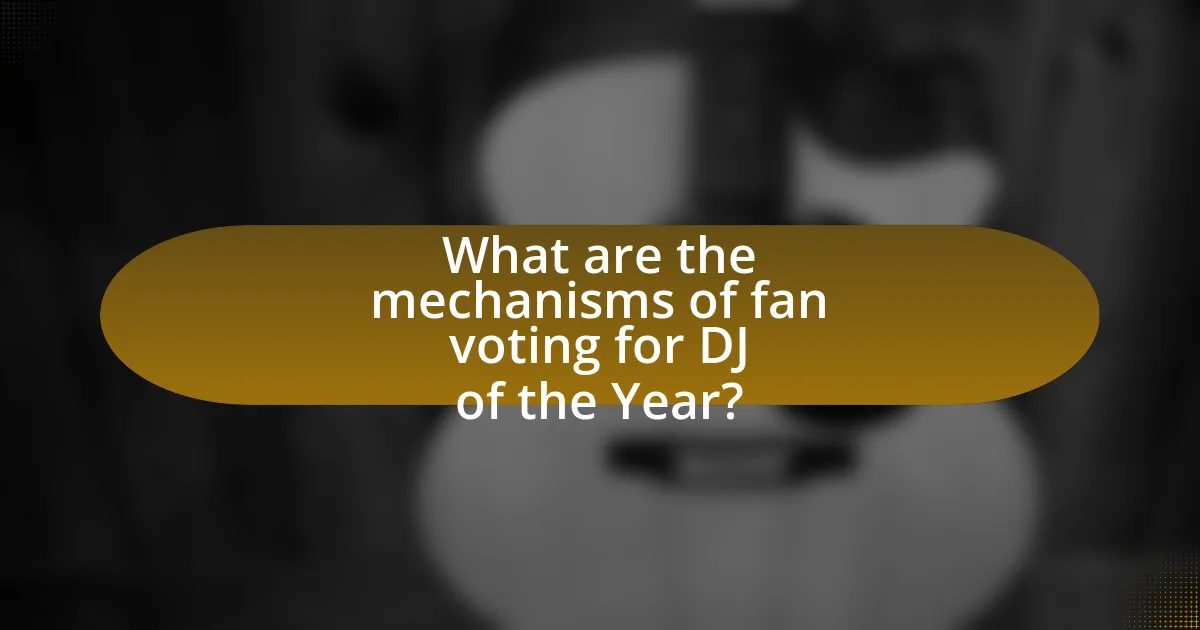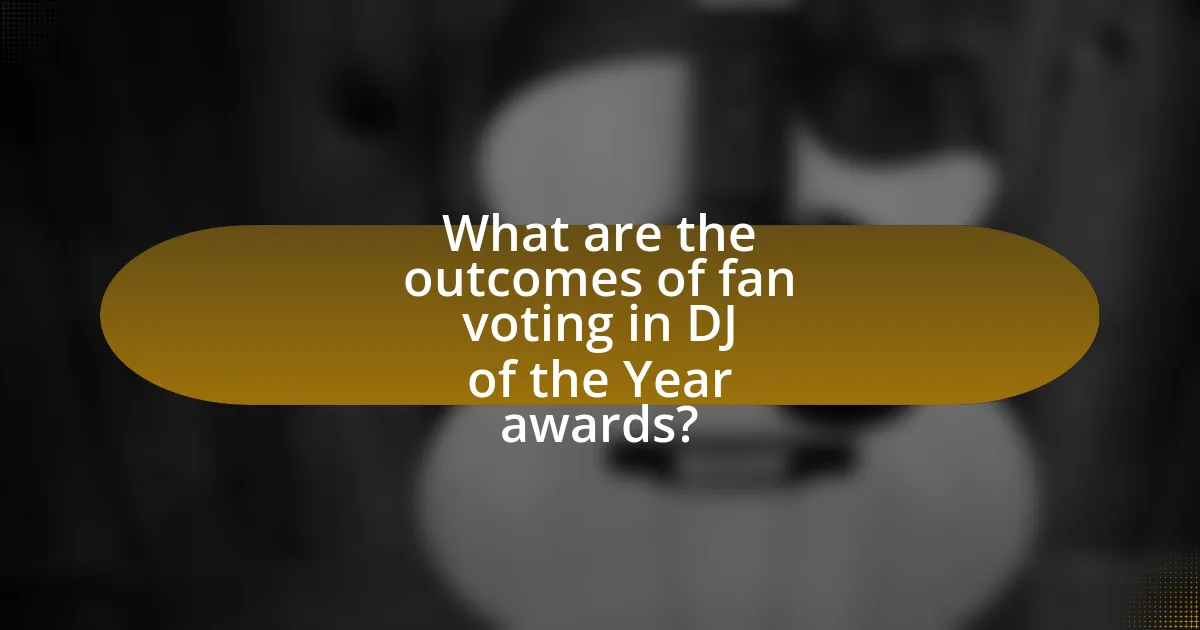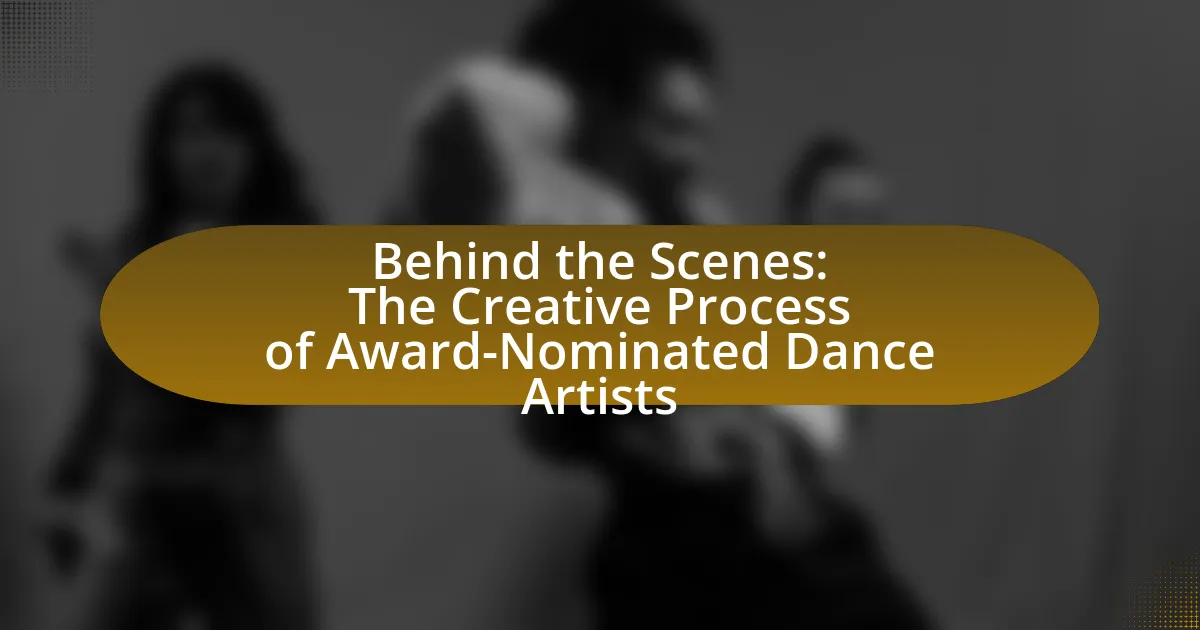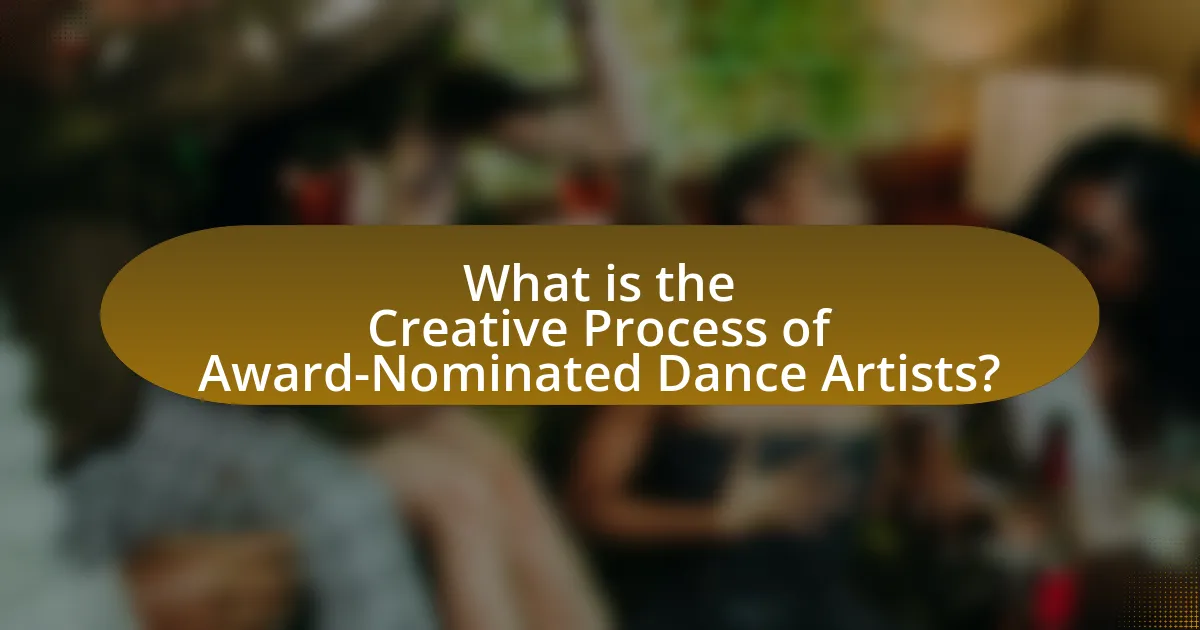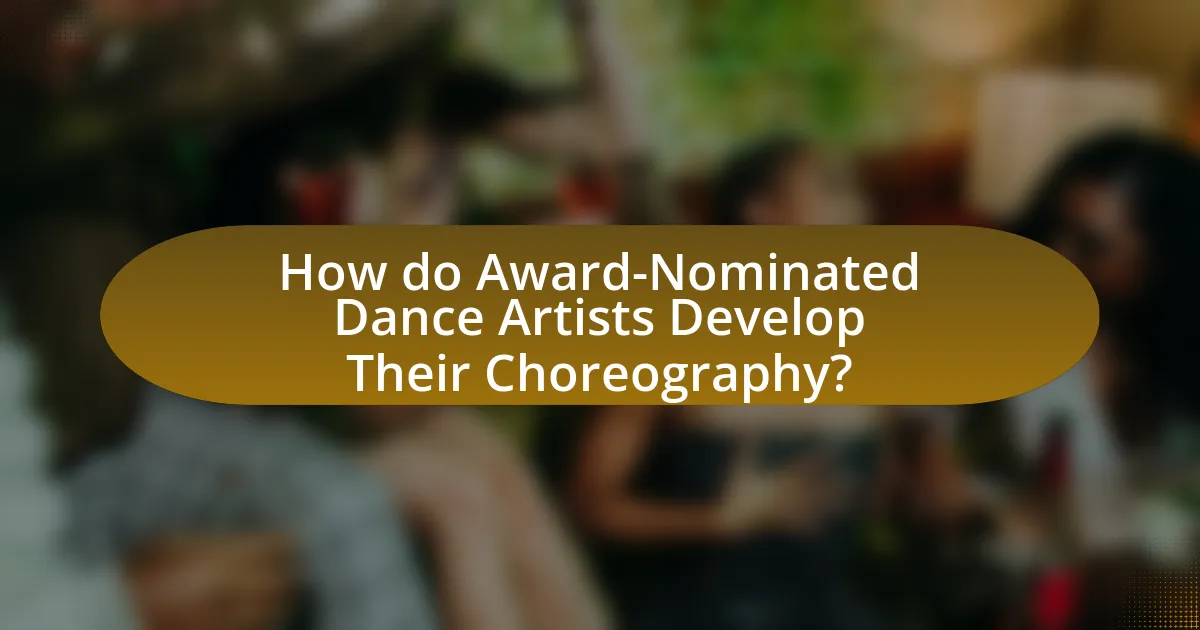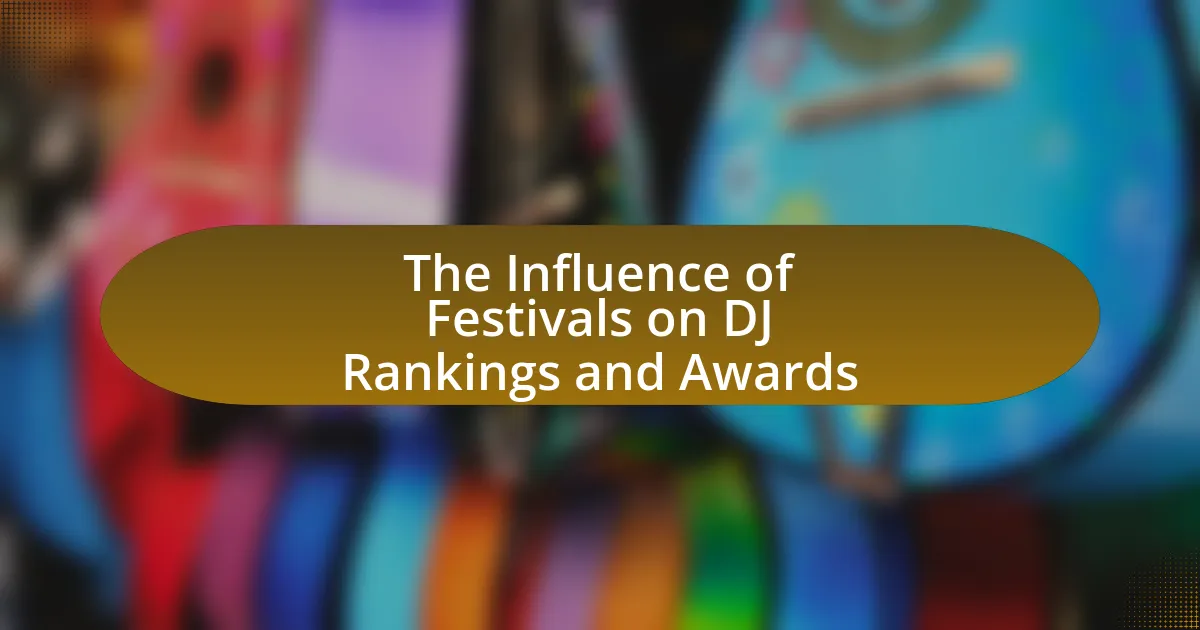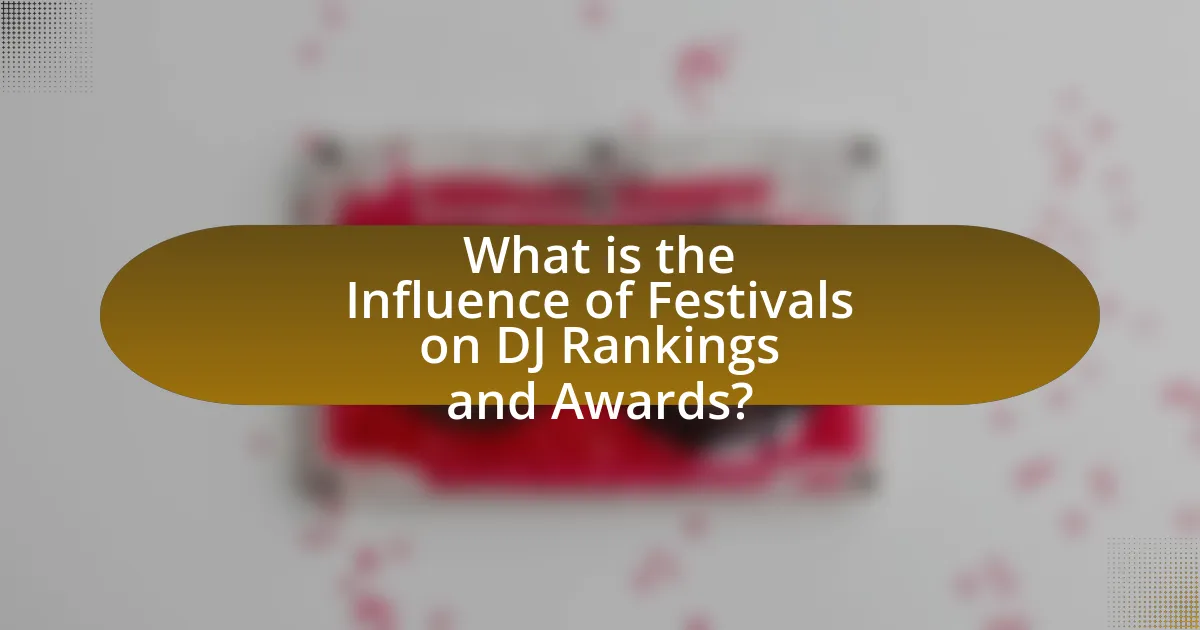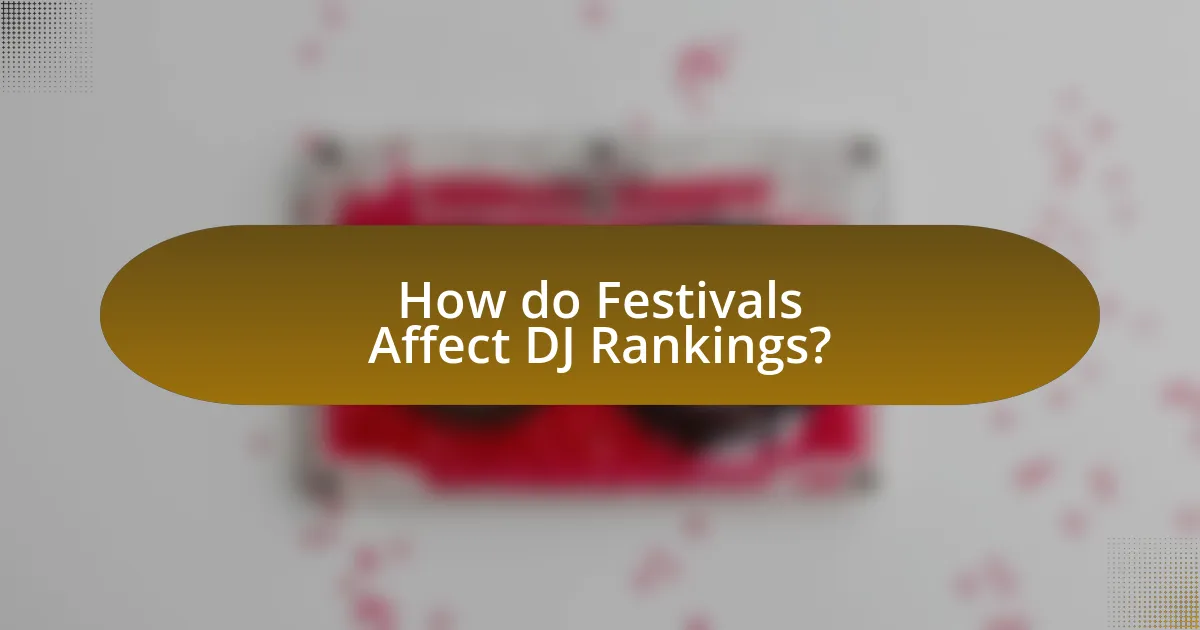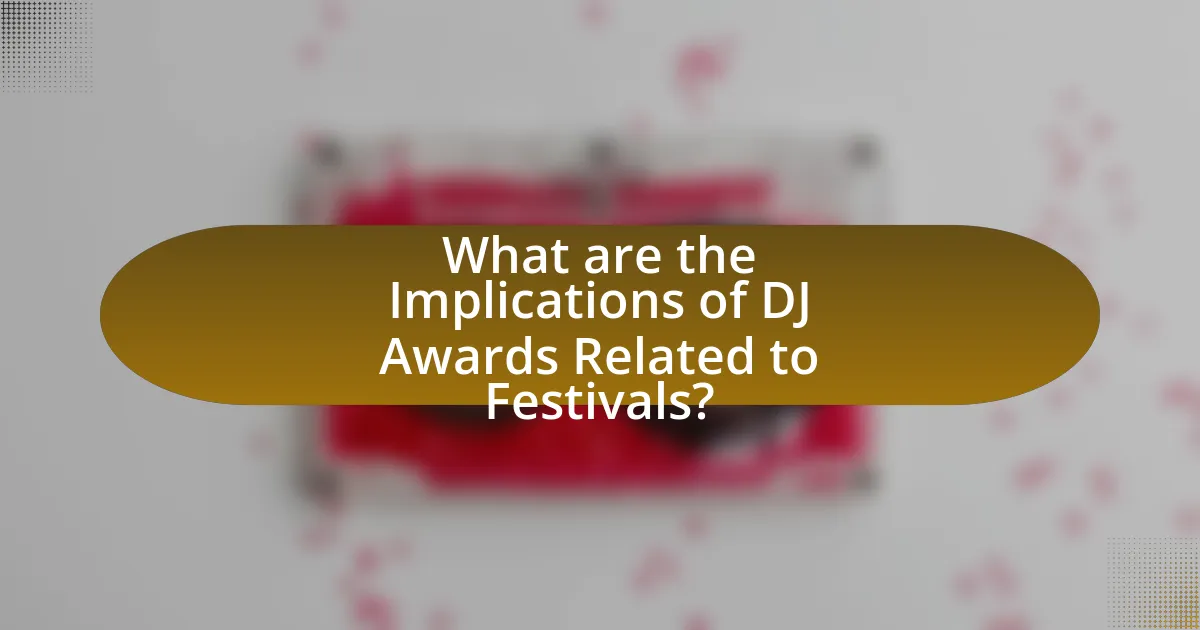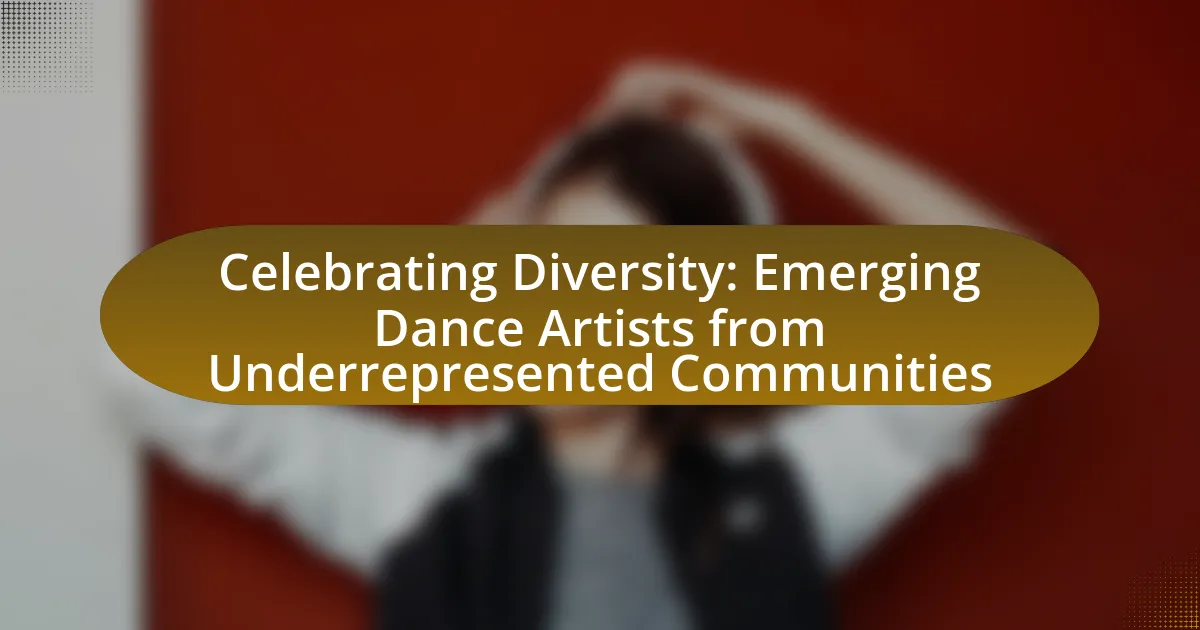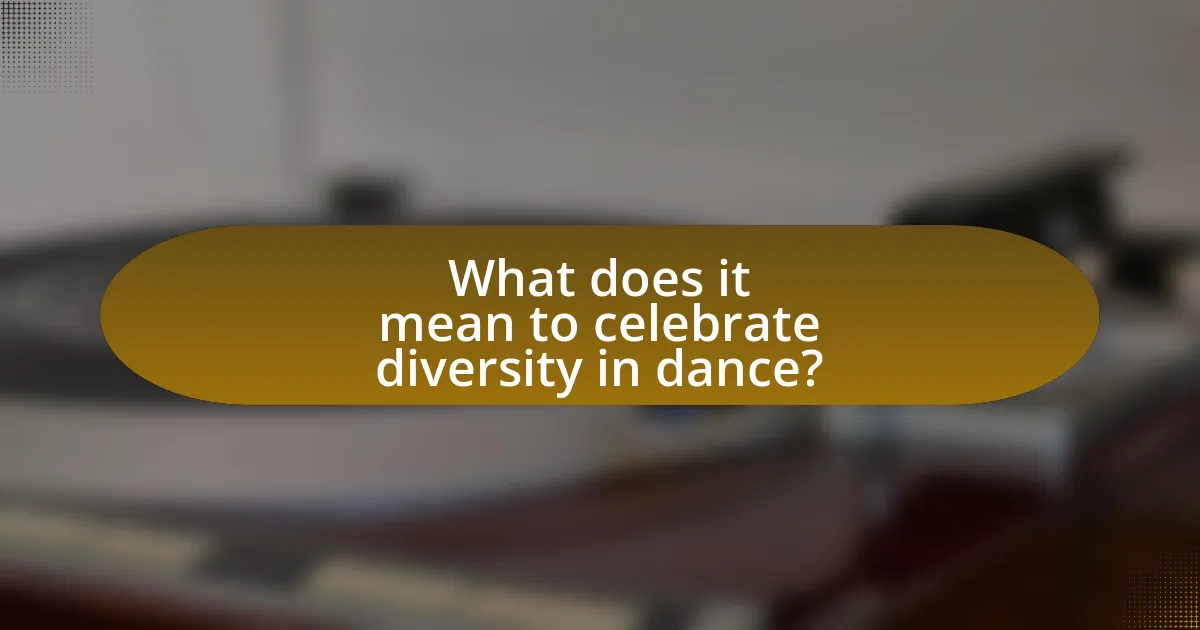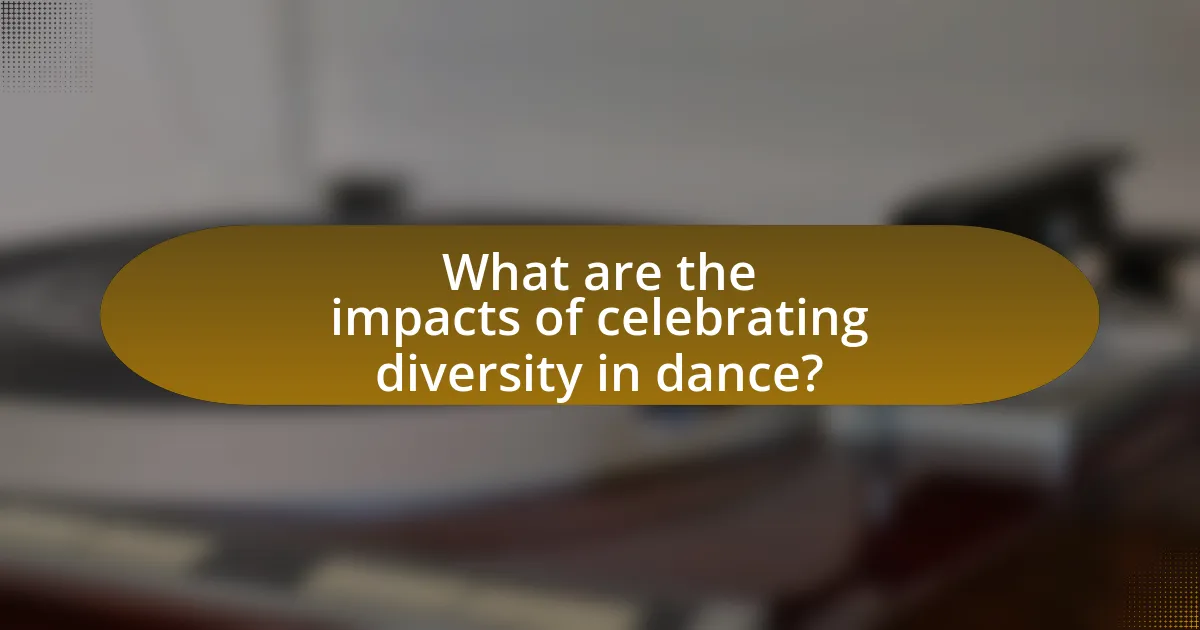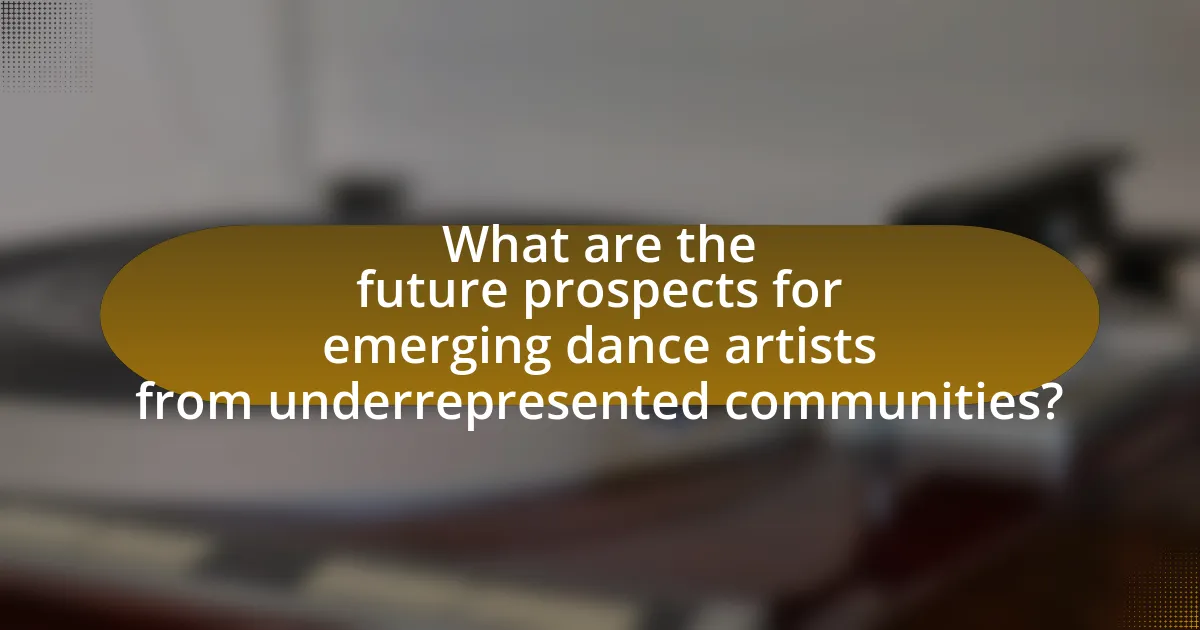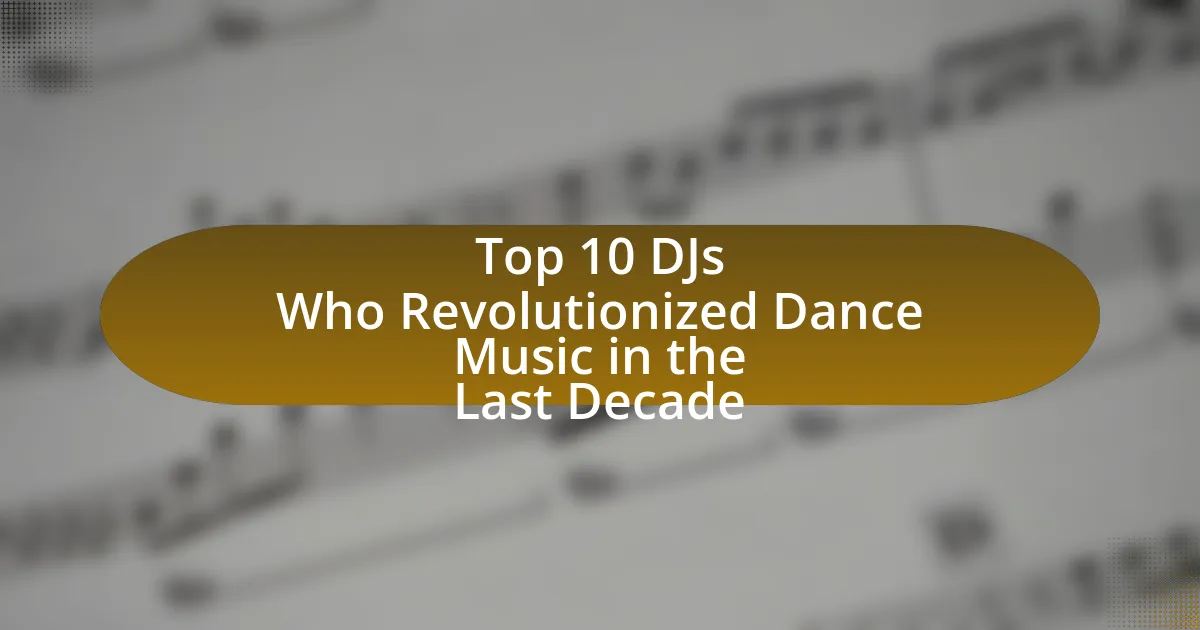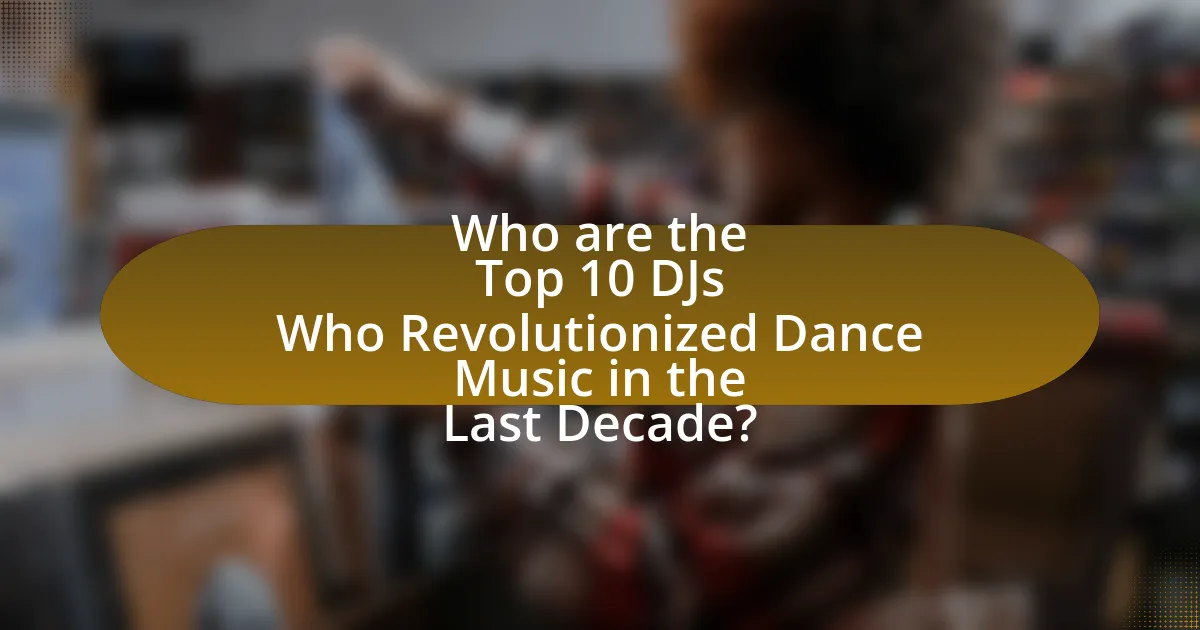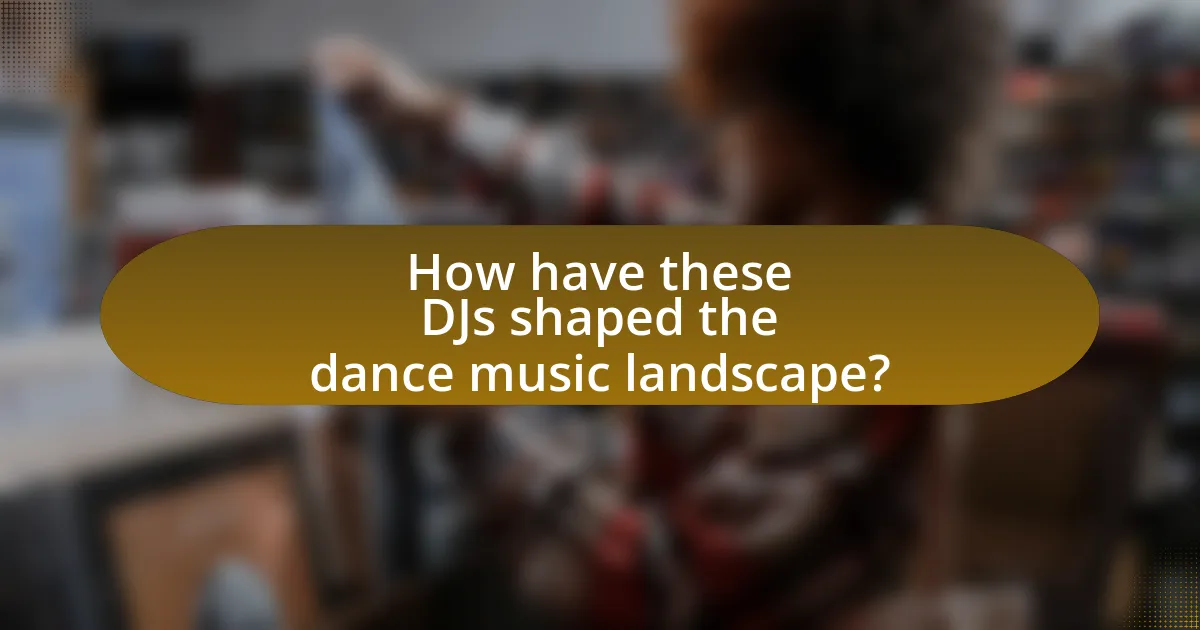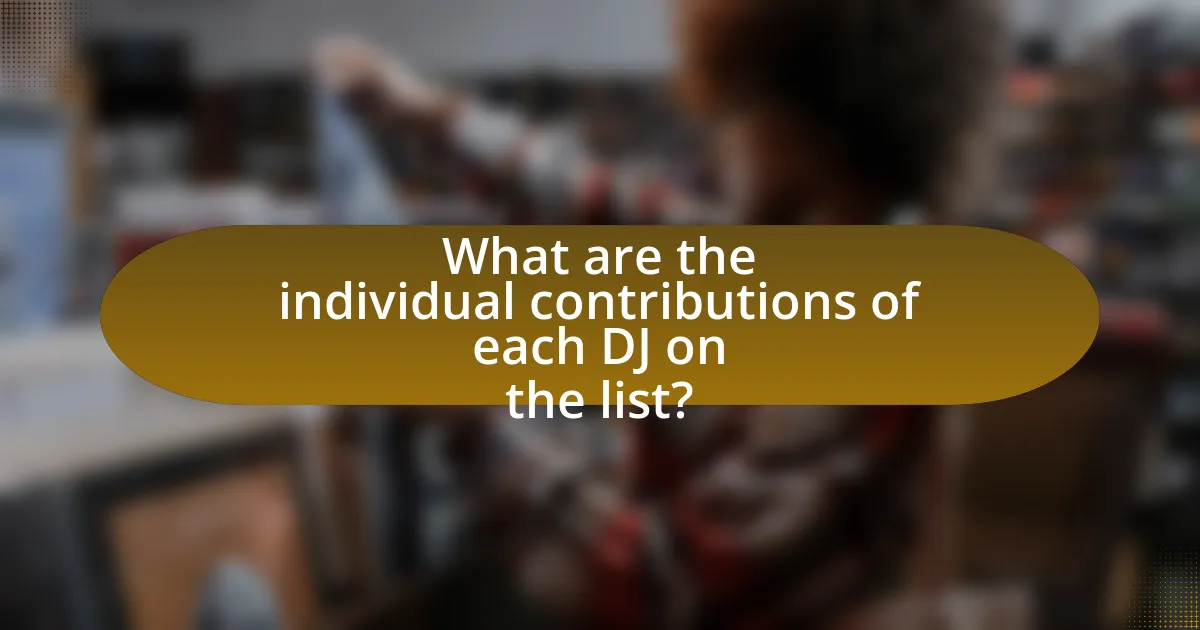The article examines how technology is reshaping the landscape for new dance music artists, focusing on advancements in music production, distribution, and promotion. Key tools such as digital audio workstations (DAWs), cloud-based collaboration platforms, and social media are highlighted for their roles in enhancing creativity and accessibility. The article also discusses the impact of streaming services on music consumption and audience engagement, as well as the challenges artists face in navigating the rapidly evolving technological landscape. Additionally, best practices for leveraging technology effectively in music careers are outlined, emphasizing the importance of balancing technological tools with artistic expression.
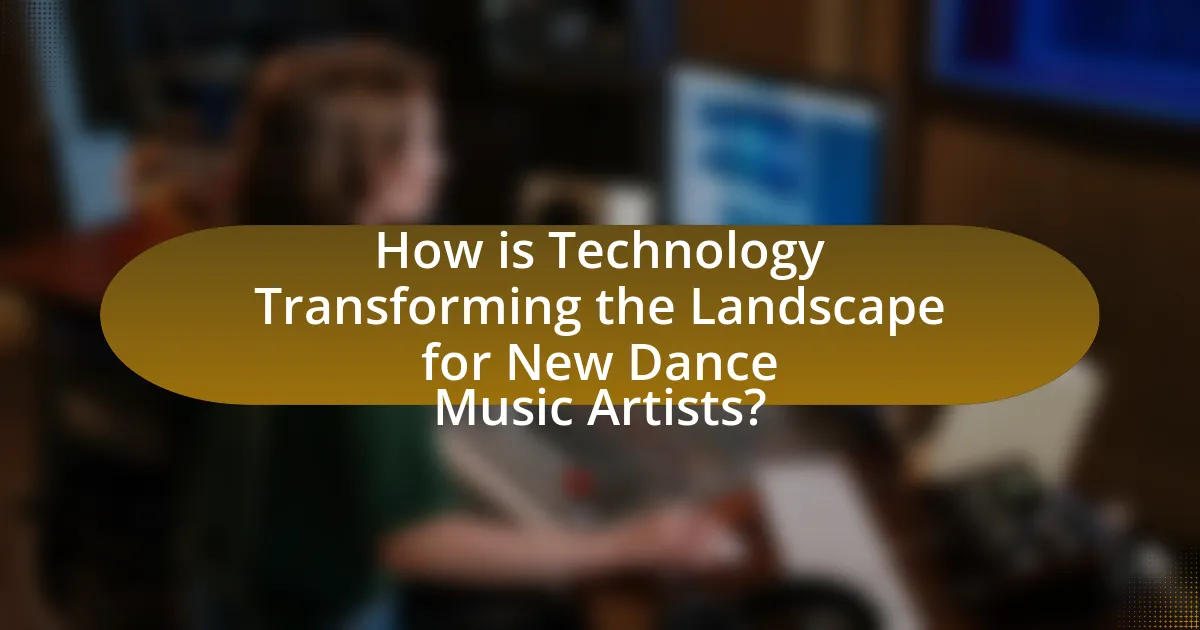
How is Technology Transforming the Landscape for New Dance Music Artists?
Technology is transforming the landscape for new dance music artists by providing accessible tools for music production, distribution, and promotion. Digital audio workstations (DAWs) like Ableton Live and FL Studio enable artists to create high-quality music from home without the need for expensive studio time. Additionally, platforms such as SoundCloud and Bandcamp allow artists to distribute their music globally, reaching audiences directly without traditional record label constraints. According to a 2021 report by the International Federation of the Phonographic Industry, over 70% of new music is now released independently, highlighting the shift towards self-sufficiency facilitated by technology. Furthermore, social media platforms like TikTok have become essential for marketing, allowing artists to engage with fans and promote their tracks virally. This democratization of music creation and distribution has significantly altered the dynamics of the dance music industry, enabling a diverse range of voices to emerge.
What technological advancements are most impactful for new dance music artists?
The most impactful technological advancements for new dance music artists include digital audio workstations (DAWs), cloud-based collaboration tools, and advanced music production software. DAWs like Ableton Live and FL Studio enable artists to create, edit, and produce music efficiently, offering a range of virtual instruments and effects that enhance creativity. Cloud-based collaboration tools, such as Splice, allow artists to work together remotely, sharing projects and samples seamlessly, which is crucial in today’s global music scene. Additionally, advancements in music production software, including AI-driven tools for mastering and sound design, streamline the production process and improve the quality of the final product. These technologies collectively empower new artists to produce high-quality music with greater accessibility and collaboration opportunities.
How do digital audio workstations (DAWs) enhance music production?
Digital audio workstations (DAWs) enhance music production by providing a comprehensive platform for recording, editing, mixing, and mastering audio. DAWs streamline the workflow for music producers by integrating various tools and features such as MIDI sequencing, audio manipulation, and virtual instruments, which allow for greater creativity and efficiency in the production process. For instance, according to a survey by the International Music Producers Association, over 70% of music producers reported that using a DAW significantly improved their ability to experiment with sound and structure, leading to more innovative music compositions.
What role do synthesizers and virtual instruments play in modern dance music?
Synthesizers and virtual instruments are fundamental to modern dance music, serving as primary tools for sound creation and manipulation. They enable artists to produce a wide range of sounds, from basslines to melodic leads, which are essential for the genre’s characteristic energy and rhythm. The use of synthesizers allows for the exploration of unique timbres and textures, facilitating innovation in composition. Additionally, virtual instruments provide accessibility and affordability, allowing emerging artists to create high-quality music without the need for expensive hardware. This democratization of music production has led to a surge in creativity and diversity within the dance music scene, as evidenced by the proliferation of independent artists and the rise of various subgenres.
How does technology influence the creative process of new dance music artists?
Technology significantly influences the creative process of new dance music artists by providing advanced tools for music production, collaboration, and distribution. Digital audio workstations (DAWs) like Ableton Live and FL Studio enable artists to compose, edit, and mix music with unprecedented ease and flexibility. Additionally, software synthesizers and plugins expand sound design possibilities, allowing artists to create unique sounds that were previously difficult or impossible to achieve.
Moreover, technology facilitates collaboration across geographical boundaries through online platforms, enabling artists to work together in real-time regardless of location. This interconnectedness fosters innovation and diversity in music styles. Furthermore, streaming services and social media platforms provide artists with direct access to audiences, allowing for immediate feedback and the ability to gauge listener preferences, which can inform their creative decisions.
The impact of technology on the creative process is evident in the rise of genres like EDM, where artists often utilize sampling and remixing techniques made possible by digital tools. According to a 2020 study published in the Journal of New Music Research, 85% of surveyed electronic music producers reported that technology significantly enhanced their creative output. This data underscores the essential role technology plays in shaping the artistic landscape for new dance music artists.
In what ways do collaboration tools facilitate remote music creation?
Collaboration tools facilitate remote music creation by enabling real-time communication, file sharing, and collaborative editing among artists regardless of their geographical locations. These tools, such as digital audio workstations (DAWs) with cloud capabilities, allow multiple users to work on the same project simultaneously, enhancing creativity and efficiency. For instance, platforms like Splice and Soundtrap provide features that allow musicians to upload, edit, and comment on tracks in real-time, fostering a collaborative environment. Additionally, video conferencing tools like Zoom and Microsoft Teams support virtual jam sessions and discussions, further bridging the gap between artists who are not physically together. This integration of technology in music creation has been shown to increase productivity and innovation, as artists can easily exchange ideas and feedback, leading to a more dynamic creative process.
How do social media platforms affect the promotion of new dance music?
Social media platforms significantly enhance the promotion of new dance music by providing artists with direct access to their audience and facilitating viral sharing. These platforms, such as Instagram, TikTok, and Spotify, allow artists to showcase their music, engage with fans, and create trends that can lead to widespread exposure. For instance, TikTok has become a crucial tool for music promotion, with tracks often going viral through user-generated content, leading to increased streams and downloads. According to a report by the International Federation of the Phonographic Industry, 70% of music consumers discover new music through social media, highlighting its pivotal role in the music promotion landscape.
What challenges do new dance music artists face with technology?
New dance music artists face significant challenges with technology, primarily due to the overwhelming number of digital tools and platforms available. This abundance can lead to decision fatigue, making it difficult for artists to choose the right software for music production, mixing, and mastering. Additionally, many new artists struggle with the steep learning curve associated with advanced digital audio workstations (DAWs) and production software, which can hinder their creative process. According to a survey by the International Music Summit, 70% of new producers reported feeling overwhelmed by technology, indicating that the complexity of tools can impede their ability to produce music efficiently. Furthermore, the rapid pace of technological advancements means that artists must continuously adapt to new trends and updates, which can be resource-intensive and time-consuming.
How does the rapid pace of technological change impact artist adaptation?
The rapid pace of technological change significantly impacts artist adaptation by necessitating continuous learning and integration of new tools and platforms. Artists must quickly familiarize themselves with emerging software, hardware, and distribution methods to remain relevant in the evolving music landscape. For instance, the rise of digital audio workstations (DAWs) and online streaming services has transformed how music is produced and consumed, compelling artists to adapt their creative processes and marketing strategies accordingly. This adaptation is supported by data indicating that over 70% of music consumption now occurs through streaming platforms, highlighting the need for artists to engage with technology to reach their audience effectively.
What are the common pitfalls of relying too heavily on technology in music production?
Relying too heavily on technology in music production can lead to several common pitfalls, including a lack of creativity, over-reliance on presets, and diminished musicianship. These issues arise because producers may prioritize technical capabilities over artistic expression, resulting in music that sounds formulaic or lacks emotional depth. For instance, a study by the University of Southern California found that musicians who heavily depend on software tools often produce tracks that are less innovative compared to those who engage in traditional music-making practices. Additionally, the convenience of digital tools can lead to shortcuts that compromise the quality of the final product, as producers may skip essential steps in the creative process.
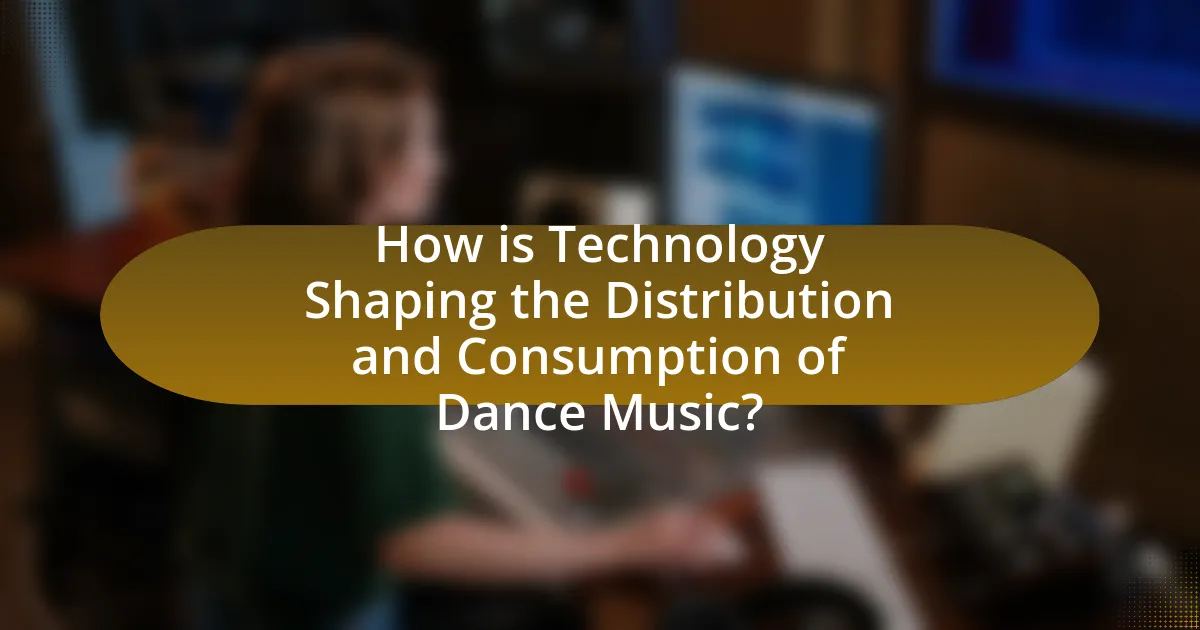
How is Technology Shaping the Distribution and Consumption of Dance Music?
Technology is significantly shaping the distribution and consumption of dance music by enabling digital platforms that facilitate instant access and global reach. Streaming services like Spotify and Apple Music have transformed how listeners access music, allowing for on-demand consumption and personalized playlists, which cater to individual tastes. According to the International Federation of the Phonographic Industry (IFPI), streaming accounted for 62.1% of global recorded music revenues in 2020, highlighting its dominance in music consumption. Additionally, social media platforms such as TikTok and Instagram have become vital for promoting dance music, allowing artists to share snippets of their work and engage with fans directly, thus enhancing visibility and audience interaction. This technological evolution has not only democratized music distribution but also reshaped marketing strategies for new dance music artists, enabling them to reach wider audiences without traditional gatekeepers.
What platforms are revolutionizing the distribution of dance music?
Streaming platforms like Spotify, SoundCloud, and Bandcamp are revolutionizing the distribution of dance music. These platforms provide artists with direct access to global audiences, enabling them to share their music without traditional gatekeepers. For instance, Spotify’s algorithm-driven playlists can significantly boost an artist’s visibility, while SoundCloud allows for easy sharing and community engagement. Bandcamp empowers artists by offering a fair revenue model, allowing them to set their own prices and retain a larger share of sales. Collectively, these platforms have transformed how dance music is consumed and monetized, fostering a more democratized music industry.
How do streaming services change the way artists reach their audience?
Streaming services fundamentally alter how artists connect with their audience by providing direct access to their music without traditional gatekeepers like record labels. This shift allows artists to distribute their work globally, reaching millions of listeners instantly. For instance, platforms like Spotify and Apple Music enable artists to upload their tracks directly, bypassing the need for physical distribution and promoting their music through algorithms that suggest songs based on user preferences. As a result, independent artists can gain visibility and build a fanbase more efficiently; in 2021, over 60% of music streamed in the U.S. came from independent artists, highlighting the significant impact of these platforms on audience reach.
What impact do digital downloads have on traditional music sales?
Digital downloads have significantly decreased traditional music sales. According to the Recording Industry Association of America (RIAA), physical album sales in the U.S. dropped from 1.2 billion units in 2000 to just 40 million in 2020, largely due to the rise of digital downloads and streaming services. This shift has altered consumer behavior, with many listeners opting for immediate access to music through digital platforms rather than purchasing physical copies. As a result, traditional music sales have struggled to compete with the convenience and affordability of digital options.
How does technology affect audience engagement with dance music?
Technology significantly enhances audience engagement with dance music by facilitating interactive experiences and broadening access to music. Digital platforms like streaming services and social media allow fans to discover, share, and interact with dance music in real-time, creating a more immersive experience. For instance, platforms such as Spotify and SoundCloud enable listeners to access a vast library of tracks, while social media channels like Instagram and TikTok allow artists to connect directly with their audience, fostering community and engagement. Additionally, advancements in live streaming technology have made it possible for audiences to participate in virtual concerts, expanding reach beyond geographical limitations. According to a report by the International Music Summit, the global electronic music market was valued at $7.3 billion in 2021, highlighting the significant role technology plays in driving audience engagement and participation in dance music culture.
What role do live streaming and virtual events play in connecting artists with fans?
Live streaming and virtual events serve as crucial platforms for connecting artists with fans by enabling real-time interaction and accessibility. These technologies allow artists to perform live from anywhere, reaching global audiences without geographical limitations. For instance, during the COVID-19 pandemic, many artists turned to platforms like Twitch and Instagram Live, resulting in millions of viewers engaging with performances that would have otherwise been limited to physical venues. This shift not only fosters a sense of community among fans but also provides artists with immediate feedback and engagement opportunities, enhancing their relationship with their audience.
How do data analytics influence marketing strategies for new dance music artists?
Data analytics significantly influence marketing strategies for new dance music artists by providing insights into audience behavior and preferences. By analyzing streaming data, social media interactions, and demographic information, artists can tailor their promotional efforts to target specific listener segments effectively. For instance, platforms like Spotify and SoundCloud offer analytics tools that reveal which tracks are most popular among listeners, enabling artists to focus their marketing on those songs. Additionally, data-driven insights can inform decisions on optimal release times and marketing channels, enhancing engagement and reach. This approach is supported by a report from the International Music Summit, which states that 70% of music marketers utilize data analytics to refine their strategies, demonstrating the critical role of data in shaping successful marketing campaigns for emerging artists.
What are the implications of technology on the future of dance music consumption?
Technology significantly impacts the future of dance music consumption by enabling greater accessibility and personalization for listeners. Streaming platforms like Spotify and Apple Music have revolutionized how audiences discover and consume music, allowing users to access vast libraries of dance tracks anytime and anywhere. This shift has led to a decline in physical sales, with digital music accounting for over 80% of total music revenue in recent years, according to the Recording Industry Association of America (RIAA). Additionally, advancements in artificial intelligence and machine learning are facilitating personalized recommendations, enhancing user engagement and satisfaction. As a result, technology is reshaping not only how dance music is consumed but also how artists connect with their audiences, ultimately influencing the genre’s evolution and market dynamics.
How might emerging technologies like AI and VR change the dance music experience?
Emerging technologies like AI and VR are set to revolutionize the dance music experience by enhancing creativity, personalization, and interactivity. AI can analyze vast amounts of data to create unique music compositions tailored to individual preferences, as seen in platforms like AIVA, which generates original music using algorithms. Meanwhile, VR offers immersive environments where users can experience live performances in virtual spaces, allowing for global participation without geographical constraints. For instance, platforms like Oculus Venues have hosted virtual concerts, enabling fans to engage with artists and each other in real-time. These technologies not only transform how music is created and consumed but also foster deeper connections between artists and audiences.
What trends are shaping the future landscape of dance music distribution?
The future landscape of dance music distribution is being shaped by the rise of digital platforms, direct-to-fan sales, and blockchain technology. Digital platforms like Spotify and SoundCloud have transformed how artists distribute their music, allowing for global reach and instant access to audiences. Direct-to-fan sales through platforms such as Bandcamp enable artists to retain a larger share of revenue by selling music and merchandise directly to their fans. Additionally, blockchain technology is emerging as a solution for transparent royalty distribution, ensuring that artists receive fair compensation for their work. These trends indicate a shift towards more artist-centric models in the dance music industry.

What Best Practices Should New Dance Music Artists Follow in Utilizing Technology?
New dance music artists should prioritize learning digital audio workstations (DAWs) and music production software to effectively create and produce their music. Mastering tools like Ableton Live, FL Studio, or Logic Pro enables artists to manipulate sound, arrange tracks, and enhance their creative output. Additionally, utilizing online platforms for collaboration, such as Splice or Soundtrap, allows artists to connect with other musicians and producers, fostering innovation and diversity in their work.
Moreover, engaging with social media and streaming services is crucial for building a fanbase and promoting music. Platforms like SoundCloud, Spotify, and Instagram provide avenues for artists to share their work and interact with audiences, which is essential in today’s digital landscape. According to a 2021 report by the International Federation of the Phonographic Industry, 70% of music consumption now occurs through streaming, highlighting the importance of these platforms for new artists.
Lastly, investing in quality production equipment, such as MIDI controllers and audio interfaces, can significantly enhance sound quality and performance capabilities. Research from the Music Industry Research Association indicates that artists who invest in technology tend to produce higher-quality music, leading to better audience engagement and increased opportunities in the industry.
How can new dance music artists effectively leverage technology for their careers?
New dance music artists can effectively leverage technology for their careers by utilizing digital distribution platforms, social media marketing, and music production software. Digital distribution platforms like Spotify and SoundCloud allow artists to reach global audiences without traditional gatekeepers, enabling them to share their music widely and gain traction. Social media marketing, particularly on platforms like Instagram and TikTok, helps artists engage with fans, promote their work, and create viral content, which can significantly boost their visibility. Additionally, music production software such as Ableton Live and FL Studio provides artists with the tools to create high-quality tracks from home, facilitating creativity and reducing production costs. These methods have been validated by the rise of independent artists who have successfully built careers using these technologies, demonstrating their effectiveness in the modern music landscape.
What are the best tools for music production and collaboration?
The best tools for music production and collaboration include Ableton Live, FL Studio, Logic Pro X, and Pro Tools. These digital audio workstations (DAWs) are widely recognized for their robust features that facilitate music creation and teamwork among artists. For instance, Ableton Live is favored for its intuitive interface and real-time performance capabilities, making it ideal for electronic music production. FL Studio is known for its user-friendly pattern-based workflow, which appeals to beginners and professionals alike. Logic Pro X offers a comprehensive suite of virtual instruments and effects, enhancing creativity in music composition. Pro Tools is the industry standard for audio editing and mixing, providing advanced features for professional sound production. These tools collectively support the collaborative efforts of new dance music artists by enabling seamless sharing and editing of projects, thus enhancing the creative process.
How can artists maintain a balance between technology and creativity?
Artists can maintain a balance between technology and creativity by integrating technology as a tool rather than a replacement for their artistic vision. This approach allows artists to leverage technological advancements, such as digital audio workstations and software synthesizers, to enhance their creative processes while ensuring that their unique artistic expression remains at the forefront. For instance, a study by the University of Southern California found that artists who actively engage with technology while prioritizing their creative instincts produce more innovative and authentic work. This evidence supports the idea that a symbiotic relationship between technology and creativity can lead to richer artistic outcomes.
What strategies can enhance the online presence of new dance music artists?
New dance music artists can enhance their online presence by leveraging social media platforms, engaging with their audience, and utilizing music streaming services effectively. Social media platforms like Instagram, TikTok, and Twitter allow artists to share content, connect with fans, and promote their music. Engaging with the audience through live streams, Q&A sessions, and responding to comments fosters a community around the artist. Additionally, utilizing music streaming services such as Spotify and SoundCloud for distribution and promotion can significantly increase visibility, as these platforms often feature new artists and playlists that can lead to broader exposure. According to a 2021 report by the International Federation of the Phonographic Industry, 70% of music consumption now occurs through streaming, highlighting the importance of these platforms for new artists.
How can social media be used effectively for music promotion?
Social media can be used effectively for music promotion by leveraging platforms to engage directly with fans, share content, and create a community around the artist. Artists can utilize features like live streaming, stories, and posts to showcase new music, behind-the-scenes content, and personal interactions, which fosters a deeper connection with their audience. According to a 2021 report by the International Federation of the Phonographic Industry, 75% of music consumers discover new music through social media platforms, highlighting the importance of these channels in reaching potential listeners. Additionally, targeted advertising on platforms like Facebook and Instagram allows artists to reach specific demographics, increasing the likelihood of engagement and conversion to fans.
What are the best practices for engaging with fans through digital platforms?
The best practices for engaging with fans through digital platforms include consistent content creation, interactive communication, and personalized experiences. Consistent content creation keeps fans informed and entertained, fostering a sense of community. Interactive communication, such as responding to comments and hosting live Q&A sessions, enhances fan loyalty and engagement. Personalized experiences, like tailored recommendations based on fan preferences, increase satisfaction and connection. According to a study by Sprout Social, 70% of consumers feel more connected to brands that engage with them on social media, highlighting the effectiveness of these practices in building strong fan relationships.
What common mistakes should new dance music artists avoid when using technology?
New dance music artists should avoid over-reliance on technology, which can stifle creativity and originality. Many emerging artists tend to depend heavily on presets and automated tools, leading to a lack of unique sound in their productions. Additionally, neglecting the importance of sound design and music theory can result in uninspired tracks that fail to engage listeners. Research indicates that artists who invest time in learning the fundamentals of music production and sound design often create more innovative and compelling music. Furthermore, failing to properly manage software and hardware can lead to technical issues during performances, diminishing the overall experience for both the artist and the audience.
How can artists ensure they are not overwhelmed by technological options?
Artists can ensure they are not overwhelmed by technological options by establishing clear goals and focusing on a few essential tools that align with their creative vision. By identifying specific objectives, such as the type of music they want to create or the audience they wish to reach, artists can streamline their choices and avoid the paralysis that comes from too many options. Research indicates that limiting choices can enhance decision-making efficiency, as demonstrated in studies on choice overload, which show that individuals perform better when faced with fewer alternatives. Therefore, by prioritizing their needs and selecting a manageable set of technologies, artists can maintain focus and creativity without feeling overwhelmed.
What are the risks of neglecting the human element in music creation?
Neglecting the human element in music creation risks producing music that lacks emotional depth and authenticity. When technology dominates the creative process, it can lead to a sterile sound that fails to resonate with listeners on a personal level. Studies have shown that music created with a strong human touch often evokes stronger emotional responses; for instance, research published in the Journal of Experimental Psychology indicates that music perceived as more expressive is linked to greater listener engagement. Additionally, over-reliance on technology can stifle creativity, as artists may become dependent on software tools rather than exploring their own unique artistic instincts. This can result in a homogenization of sound, where music becomes formulaic and predictable, ultimately diminishing the diversity and richness of the musical landscape.
